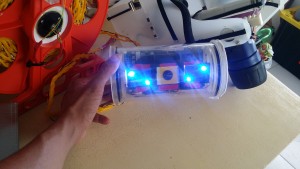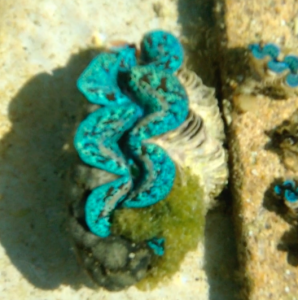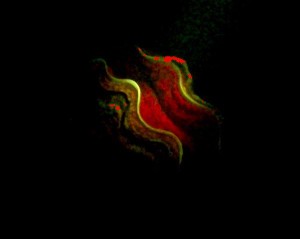fluorescence
Guy Trimby (Plymouth Marine Laboratory) in collaboration with Paul Spaur, and the rest of the AARR team, set to prove that OpenROVs can be used as tools to detect fluorescence in the marine environment, and used the Cook Islands as a test bed for this experiment.Guy developed an UV LED light package, which excites proteins in organisms, causing them to emit a different wavelength of light (fluoresce), often times giving off brilliant colors.

A specially filtered Go Pro camera filters and records the light for analysis. Paul and the AARR team outfitted their ROVs with a special payload setup to carry the system, and modified their main LED lights with filters to make them emit only blue/UV light, and filtered the main ROV camera.


The fluorescence is used in many species as warning signs, in communication, and in protection from the sun. The system has a lot of important implications such as: detecting new organisms and proteins that fluoresce, using said proteins as biochemical markers for use in medical research, and for use in gauging the health of corals and other organisms.
We set up several sites in a coral reef, and recorded day and night surveys of each. At night, it was difficult to see, so we marked each area with glow sticks prior to sunset, and navigated the ROVs out to each one. We were able to see each coral that fluoresced both in day and night for identification, and we even discovered a species of clam, the Small Giant Clam (Tridacna maxima) that was not previously known to fluoresce!




